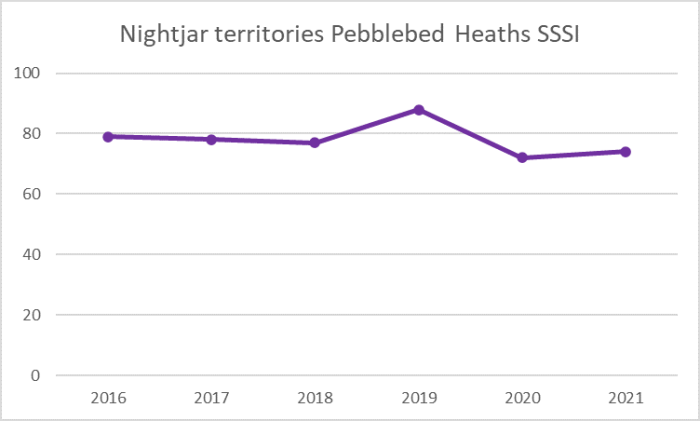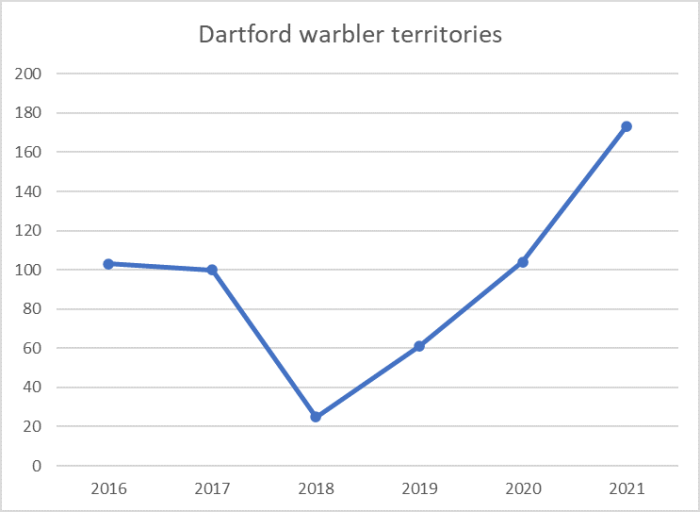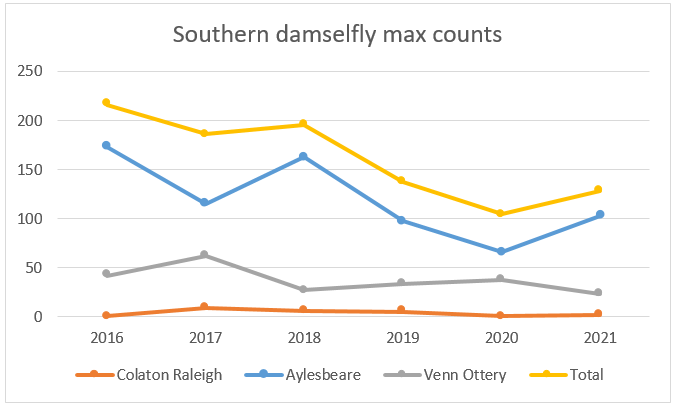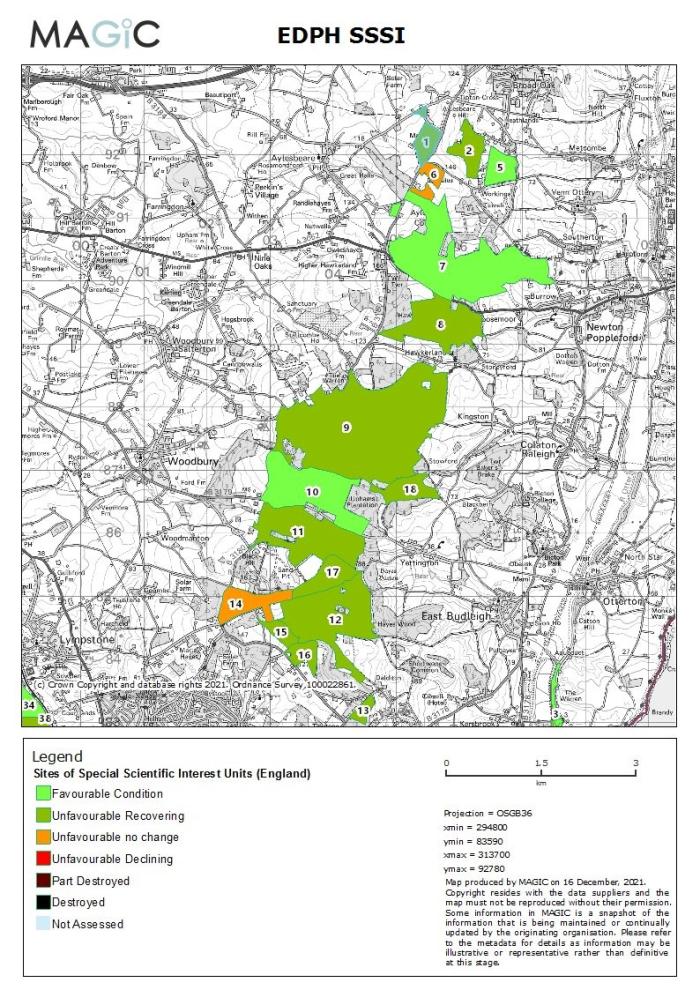Read the full report.
Nightjar territories broadly stable across the heaths.
- Nightjar monitoring effort is constant across the area of interest and covers almost all of the Special Protection Area (SPA).
- Data suggests that the number of territories remained broadly stable across the area during the five year period, close to the target value of 83.(Figure 1, page 6).

Significant fluctuation in Dartford Warbler population.
- Dartford warbler monitoring effort is constant across the area and covers most but not all of the SPA.
- The data for the period show significant fluctuation in population, with the number of territories dropping to just 25 in 2018, with a steady increase thereafter.
- The 2021 season returned a count of 173 territories across the surveyed part of the SPA, exceeding the target of 123.
- The sharp population decline in 2018 can be directly attributed to severe winter/spring weather. (Figure 2, page 8).

Southern damselfly population has declined.
- Southern damselfly are monitored at three known locations on the EDPH.
- Their population has declined during the period but this is likely due to hydrological and ecological site changes that are not related to recreational pressure. (Figure 3, page 9).

Habitat condition assessment report from Natural England pending.
- Habitat condition information for the north Atlantic wet heaths with cross-leaved heath and the European dry heaths is based on species composition and structure is collected by Natural England.
- These habitat features are assessed against idealised favourable condition heathland targets.
- A complete assessment was carried out across the Special Area of Conservation (SAC) in 2021, with the report pending. This will be reported when available. (Map 1, page 11, below shows condition assessments of units as at last survey in 2012 and/or 2017).

Value in closer monitoring of Nightjar productivity.
- The current collection and analysis of data is good enough to track territory use across the heaths and modelling could explore territory selection in relation to visitor use.
- However, it is not able to give any insight into the productivity of these birds. Even if there is confidence that territory selection is not limited by visitor pressure (i.e. the birds are making use of the best quality habitat regardless of visitor use and not pushed into sub-optimal locations), this does not assess whether disturbance limits the breeding success of these pairs.
- It is possible that if nesting attempts fail to produce enough fledglings the population will become unsustainable and decline over longer periods. This may go undetected as other birds may move in to occupy empty territories, masking the real decline in the population.
Annual reports to Executive are recommended.
- It is recommended that future monitoring reports concerning the EDPH are provided to the Executive Committee on an annual basis for information.
- Any significant issues within the remit of the mitigation Strategy arising in the interim will be reported as and when necessary.